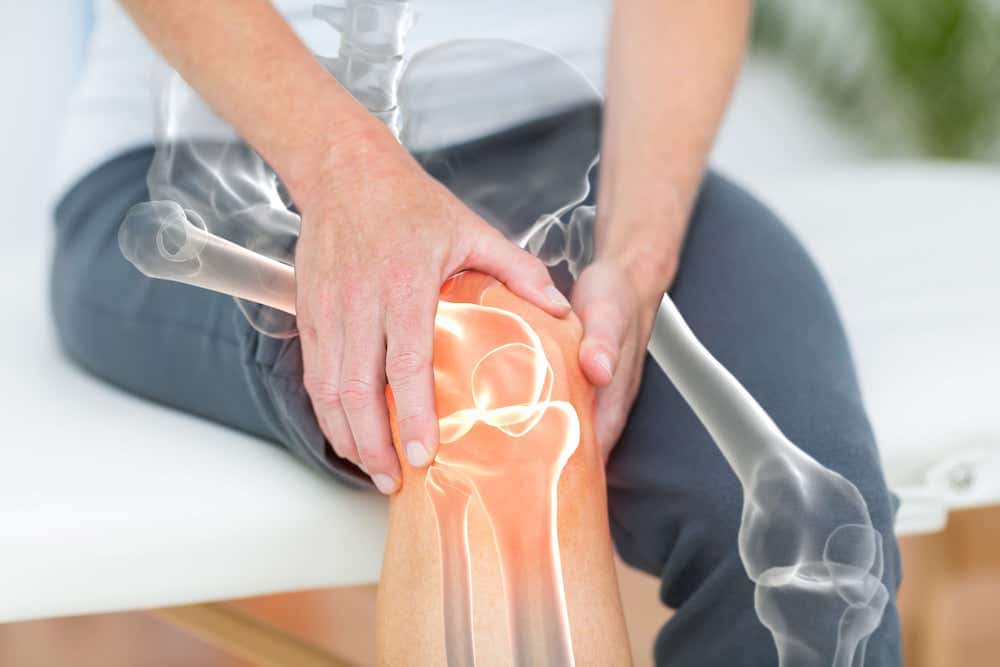Signs and symptoms

Multiple myeloma can be symptomatic or asymptomatic depending on the stage of the disease and each particular patient. 30% of cases are detected with a routine blood screening, and these patients do not display any signs and symptoms. The rest of the patients are usually diagnosed after they start displaying bone-related events, usually a pathologic fracture.
Here’s a list of signs and symptoms:
- Bone pain: It is the most common symptom in multiple myeloma, and up to 70% of patients display some degree of bone pain when they are diagnosed. The symptom may not be severe, and it is sometimes neglected by patients. The most usual painful area is the lumbar spine, which is why these patients typically report chronic back pain.
- Pathologic fractures: Up to 93% of patients with multiple myeloma will develop a type of pathologic fracture or a bone lesion in one site or more. This is a widespread finding in multiple myeloma patients and often a cause of evaluations and diagnostic tests in otherwise apparently healthy patients.
- Compression in the spinal cord: In some patients, multiple myeloma has a compressive effect on the spinal cord. This happens in different levels of the spine, and presenting symptoms include numbness, muscle weakness, and back pain. This condition often takes the extremities, and some develop paralysis if the patient is not treated correctly.
- Bruising and easy bleeding: Similar to other blood malignancies, multiple myeloma is associated with an increased risk of bleeding and clotting abnormalities. Not all patients develop this problem, but it is not rare, either. As noted above, multiple myeloma triggers a displacement of hematologic lines and sometimes triggers thrombocytopenia. In other cases, the monoclonal proteins absorb clotting factors and cause a tendency to bleeding.
- Hypercalcemia symptoms: Around 30% of patients with multiple myeloma may also develop an alteration in blood calcium levels. Hypercalcemia is an increase in blood calcium, and patients usually develop symptoms such as constipation, somnolence, confusion, and nausea. Unlike other malignancies, patients with hypercalcemia in multiple myeloma do not affect their prognosis.
- An increase incidence of infections: The displacement of cell lines in the blood causes a deficiency in the number and function of white blood cells. This often leads to infections, especially from microorganisms such as herpes zoster and Haemophilus influenza.
- Blood hyperviscosity: In these patients, blood viscosity is usually higher, sometimes 4 times the blood viscosity of normal patients. This triggers a series of signs and symptoms that include general malaise, somnolence, easy bruising, sluggish thinking, and sometimes fever and sensory loss. In advanced conditions, patients may also develop epistaxis and a higher risk of heart attack, stroke, and other cardiovascular events.
- Neurologic problems: The more rapid multiple myeloma is diagnosed and treated, the less likely it will be to develop neurologic complications such as peripheral neuropathies and carpal tunnel syndrome. Meningitis is also more common in patients with multiple myeloma as compared to the average.
- Weakness and anemia: Weakness is one of the most common symptoms in multiple myeloma. It is usually due to anemia (a reduction in the number of red blood cells or hemoglobin levels).
In the physical exam, doctors may also find the following signs:
- Bony tenderness: It is ubiquitous, even in patients without a pathologic fracture.
- Liver and spleen swelling: It is also prevalent, known as hepatosplenomegaly. In some patients, there’s also deposition of immunoglobulin in the heart, resulting in cardiomegaly (an increase in the heart size).
- Signs of amyloidosis: There’s a deposition of amyloid plaques in different parts of the body. The most important signs include macroglossia (an increase in the size of the tongue), nodular skin lesions where amyloid is deposited, and swelling of the shoulder joints on both sides.
